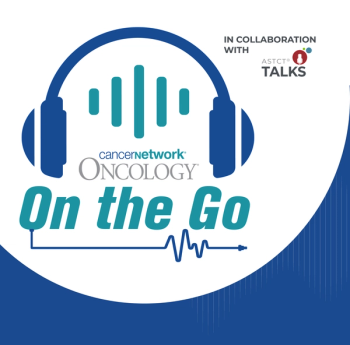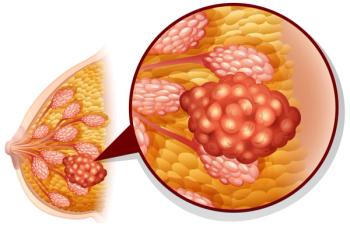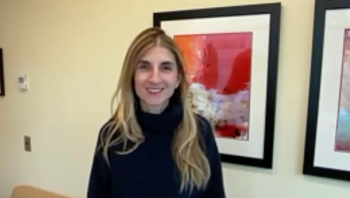
Relapsed/Refractory SCLC May Benefit From the Combination of BMS-986012 Plus Nivolumab
Encouraging survival end points are observed with BMS-986012 plus nivolumab in immune checkpoint inhibitor–naïve SCLC, according to data presented at the 2020 World Conference on Lung Cancer.
The anti–fucosyl-GM1 monoclonal antibody BMS-986012 was able to induce promising results when added to nivolumab (Opdivo) to treat patients with relapsed/refractory small cell lung cancer (SCLC) who had never received an immune checkpoint inhibitor as part of systemic therapy, according to updated data from a phase 1/2 trial (NCT02247349) presented at the 2020 World Conference on Lung Cancer Singapore.1
Moreover, the combination induced a greater response to therapy than nivolumab alone.
“This shows the response rate in 11 out of 29 patients, or 38%, had a full RECIST response,” Neal Ready, MD, PhD, a medical oncologist at Duke Cancer Institute, said during a pre-recorded presentation of the data. “This compares favorably with the historical response rate of 12% reported for nivolumab monotherapy in a similar setting.”
This first-in-human, dose-escalation and expansion trial enrolled a total of 29 patients (median age, 65 years; range, 46-79) with relapsed/refractory SCLC. More than half (52%) of the study population were men, all participants were White and a significant number of participants (76%) were current or former smokers. To be enrolled, each patient had to have received at least 1 prior platinum-based treatmen; however, no previous treatment with immunotherapy was permitted.
In the first part of the trial, patients received 360 mg nivolumab IV every 3 weeks with either 400 mg BMS-986012 every 3 weeks (n = 8) or 1000 mg BMS-986012 (n = 8). The dose-escalation study determined that the combination with 400 mg BMS-986012 was the ideal dose and an additional 13 patients were enrolled. The safety of the drug combination was the primary end point of the study. Additional key end points included the response rate, duration of response (DOR) and progression-free survival (PFS).
“We saw the typical immune-related toxicity of nivolumab with some additional toxicity related to the anti–fucosyl-GM1 antibody,” said Ready. “They were primarily dermatologic with pruritis being the most prominent side effect. The pruritis typically started while the drug was being infused, was typically grade 1 or grade 2, and often improved over time.”
Other any grade adverse events (AEs) related to treatment included dry skin (28%), fatigue (28%), and hypothyroidism (17%). Two patients from the 400 mg arm and 3 patients from the 1000 mg arm discontinued receiving the combination because of toxicities.
Grade 3/4 treatment-related AEs included 1 case each of diarrhea, pancreatitis, increased lipase levels, dehydration, and hepatic failure.
Of note, Ready said, a patient treated at Duke received 56 cycles of combination therapy over a 38-month period.
At cutoff, Ready also noted, there was an impressive median DOR of 26.4 months (95% CI, 4.4 months-not reached [NR]). In fact, 4 patients remained on study therapy at data cutoff.
The median overall survival among all patients in the study was 18.7 months (95% CI, 8.2-NR) and the median PFS was 2.1 months (95% CI, 1.4-9.9).
“These results are promising, although in a small sample size,” Ready said. “The aggregate goals of anti–fucosyl-GM1 monoclonal antibody will be studied in an upcoming randomized phase 2 trial in which patients will receive a combination of carboplatin and etoposide and nivolumab, with or without the anti–fucosyl-GM1 monoclonal antibody. Enrollment is planned to start in early 2021.”
Reference:
Chu Q, Leighl N, Surmont V, et al. Clinical Activity of BMS-986012, an Anti–Fucosyl-GM1 Monoclonal Antibody, Plus Nivolumab in Small Cell Lung Cancer. Presented at: 2020 World Conference on Lung Cancer; January 28-31, 2021; Virtual. Abstract FP03.03
Newsletter
Stay up to date on recent advances in the multidisciplinary approach to cancer.





